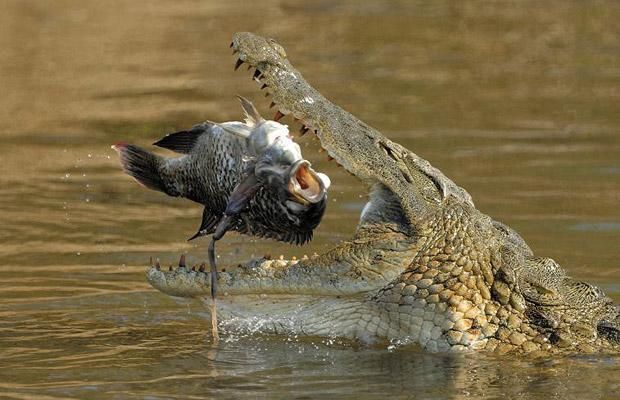
The Nile Crocodile
THE NILE CROCODILES
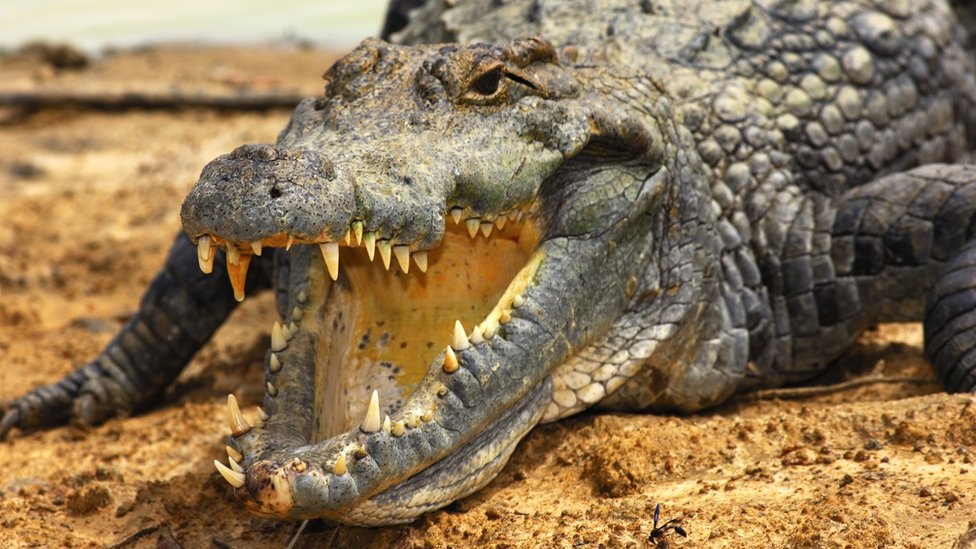
The Nile Crocodile “Crocodylus niloticus” is a large crocodilian inhabitant to the fresh-waters of Africa. The Nile crocodiles are present in 26 African countries and they are widely distributed throughout sub-Saharan Africa. They are also in the Nile Basin, freshwater marshes, as well as mangrove swamps. They occur mostly in the central, eastern, and southern regions of the continent. The Nile crocodile lives in different types of aquatic environments such as lakes, rivers, swamps, and marshlands.
One of the best places to see the Nile crocodiles is along river Nile and the shoreline. Murchison Falls National park is a home and habitat to a big population of crocodiles. Murchison falls National Park has the highest concentration of Nile crocodiles in Africa. You can explore this while on a boat ride to the magnificent Murchison falls or to the Lake Albert delta falls.
Where do we find crocodiles?
Behavior
Crocodiles are mostly nocturnal animals and predators that spend most of their time in the water although they are also known to make several journeys on land. In the first weeks of life of the young crocodiles, they feed on insects, crustaceans, snails, small fishes, frogs, and tadpoles.
Nile crocodiles are solitary animals although they occasionally feed in small groups, consisting of several individuals. They usually use a special technique of enclosing a water body or area in order to feed on the fish within it.
Nile crocodiles are opportunistic apex predators and very aggressive, capable of taking almost any animal within their range.
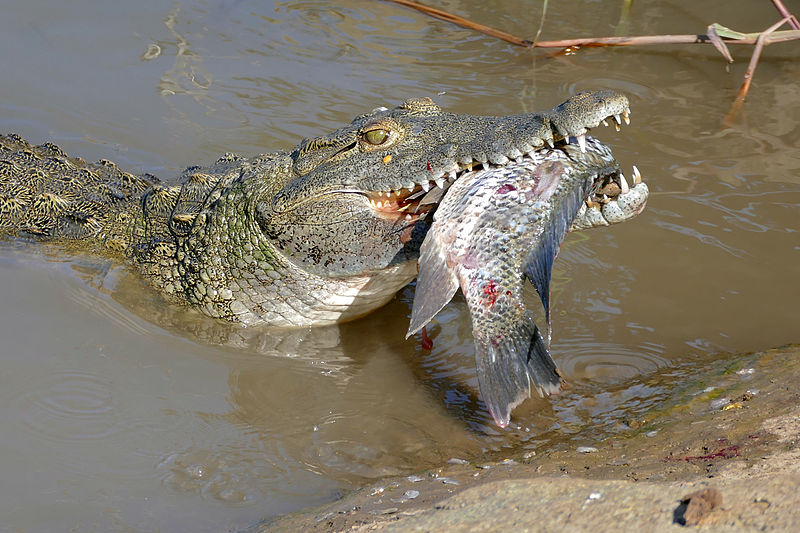
Diet
The diet of the Nile crocodile is mainly fish, but it will attack almost anything unfortunate enough to cross its path, including zebras, small hippos, porcupines, birds, and other crocodiles. They feed partly or wholly on the bodies of dead or decaying animal flesh “scavenge carrion”, and can eat up to half its body weight at a feeding. The diet of an adult crocodile is up to 70% fish and other prey items may include zebras, young hippos, porcupines, pangolins, and also the migrating wildebeests.
What do crocodiles eat or feed on?
Reproduction
One unusual characteristic of this fearsome predator is its caring nature as a parent to its young ones. Where most reptiles lay their eggs and move on, the Nile crocodiles guard their nests until the eggs hatch, and they will often roll the eggs gently in their mouths to help hatching babies emerge.
Size
The average sizes are more in the range of 16 feet and 500 pounds.
Mass: 220 – 750 kg (Male, Adult), 40 – 250 kg (Female, Adult)
Length: 4.2 m (Male, Southern Africa population, Adult), 2.4 – 3.8 m (Female, Adult)
The largest Nile crocodile ever officially recorded was a massive 21 feet and 2 inches long. The male crocodile was killed by the Duke of Mecklenburg in Tanzania in 1905 and weighed between 2,300 and 2,400 pounds.
Africa’s largest crocodilian can reach a maximum size of about 20 feet and can weigh up to 1,650 pounds.
How big is a crocodile?
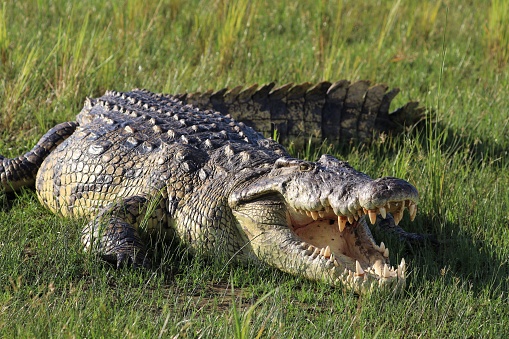
Threats to Survival
What eats a Nile crocodile?
Humans are the only threat to an adult Nile crocodile, mainly to kill them or hunt them for food. However, baby Nile crocodiles fall victim to many predators including Nile monitor lizards, African fish eagles, snakes, and honey badgers.
Unlike other “man-eating” crocodile species like the saltwater crocodile, the Nile crocodiles live in close proximity to human populations through most of its range, so contact is more frequent.
They were hunted close to extinction in the 1940s through the 1960s. However, local and international protection organs helped them multiply in most areas. In some regions though, the pollution and habitat loss have severely depleted their numbers
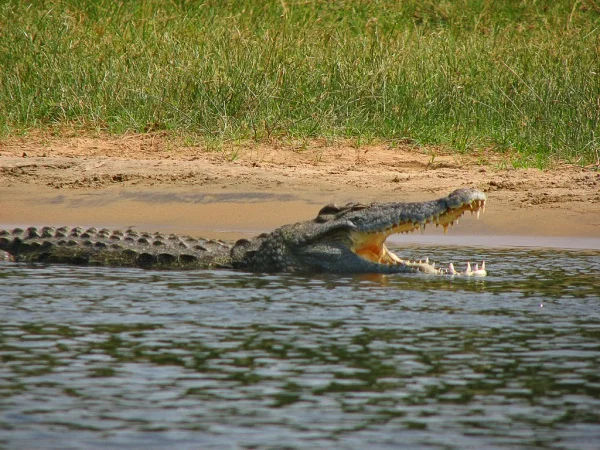
Can crocodiles live with humans?
Attacks on Humans
Although the people are not entirely at fault, often times they are protecting themselves from these predators. Crocodile attacks on humans are common in places where large crocodilians are native and human populations live. There’s an estimate of over 1,000 people that die of crocodile attacks each year. Most of the victims are villager washing clothes by the riverbanks that act as pray to the Nile crocodiles.
Production
The females nest in November and December on sandy shorelines, dry stream beds, or riverbanks. A female can lay 25-100 eggs, which she covers with sand, then guards until they hatch.
An estimated 10% of eggs will survive to hatch and a mere 1% of young that hatch will successfully reach adulthood.
Life span
They can live up to 45 years in the wild, and may live up to 80 years in captivity
Moving speed
The Nile crocodiles are very reptiles but can run up to a speed of 35 km/h
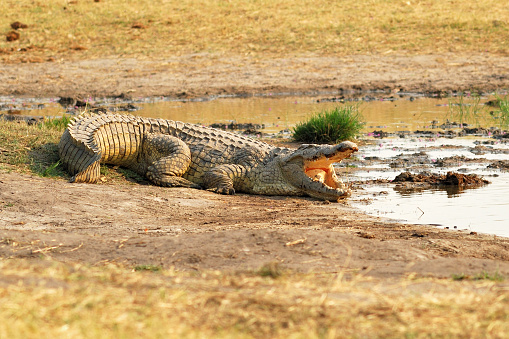
Ecology and Conservation
What’s the ecological importance of crocodiles to the environment?
Nile crocodiles are ecologically important as predators as they help the environment by balancing the population of the barbel catfish, which are predators themselves. Barbels eat other fishes which are the diet of more than 40 species of birds. If birds leave an area because there are no edible fish, the amount of bird drops, which provides nutrients for the fish and declines leading to disruption of the food chain. Unfortunately, the Nile crocodiles’ population suffers from pollution, hunting, and entanglement in gill nets.
Pamoja tours and travel
The Nile crocodile is a massive reptile and probably the most feared predator in Africa. It is one of the very few wild animals that regularly appears on the human beings’ menu in selected high-end hotels.
5 amazing facts about the Nile Crocodile
- Crocodiles have the strongest bite in the animal kingdom. And the Nile crocodile is no different from that. Its bite can exert a force eight times more powerful than that of a great white shark and 15 times more than a Rottweiler’s. Powerful muscles for closing the jaws, however, contrast with small, weak ones for opening them.
- Female crocodiles exhibit impressive maternal care to their young ones. They use their massive jaws to transport newly hatched young to a ‘nursery pool’ where they protect them from predators.
- The sex of crocodile hatchlings is determined by the temperature at which the eggs incubate. At 30ºC or less they will be mostly female, at 31ºC they will be mixed up and at 32ºC, they will be mostly male.
- Crocodiles are the most vocal of reptiles. Among more than five different calls are the deep, vibrating bellow of courting males and the ‘peeping’ of babies inside the egg. This ‘peeping’ encourages the female to excavate the nest.
- Large crocodiles swallow stones, known as gastrolith. These act as ballast, helping them to balance their body underwater.
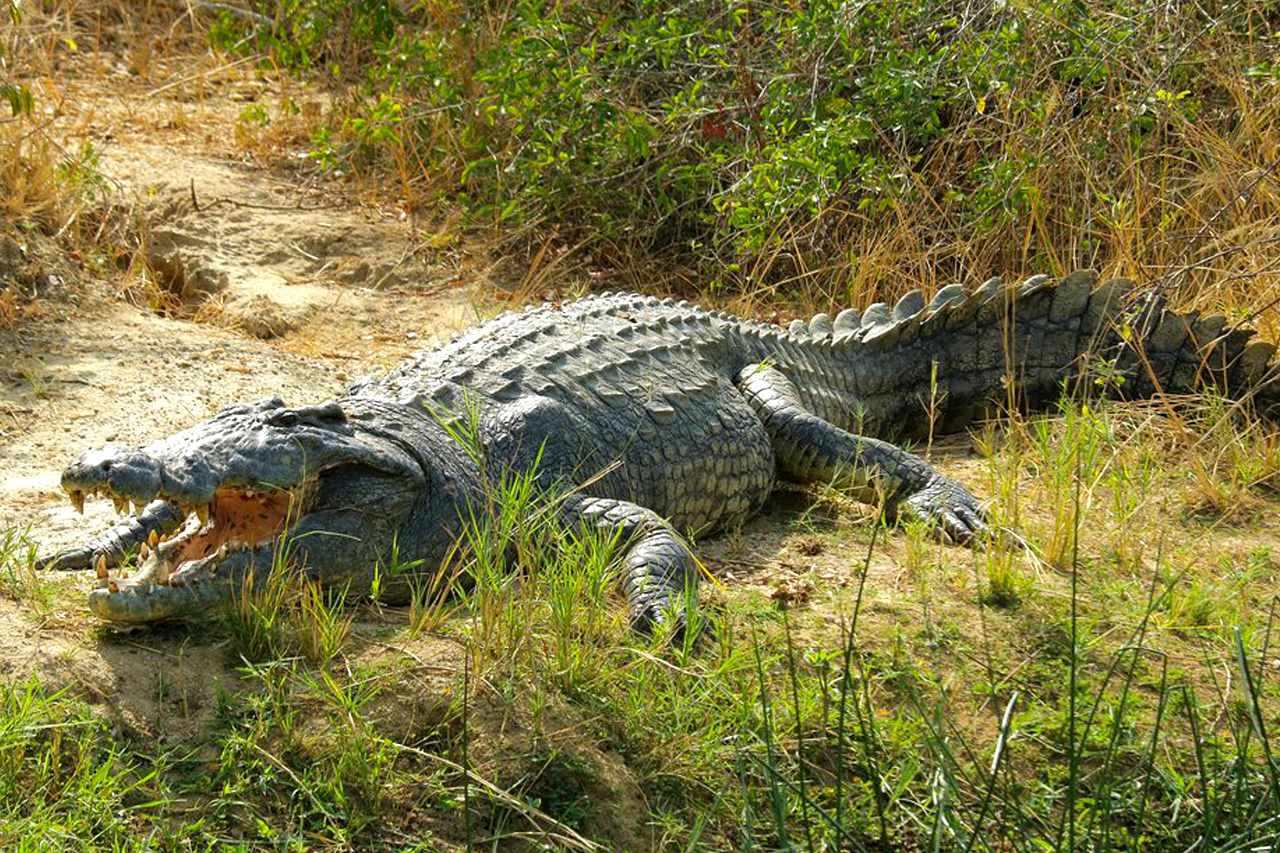
Can crocodiles live with humans?
In rare cases, individual crocodilians have been known to bond so strongly with people that they become playmates for years. For example, a man who rescued a crocodile that had been shot in the head became close friends with the animal. Only swim in designated safe swimming areas and obey all crocodile warning signs if you plan on swimming in a lake.
Conclusion
Pamoja tours and travel is one of the best tours and travel companies operating within 5 east Africans. When you’re planning a trip, consider going through a tour company or a tour operator
If you have plans of traveling to any East African country, for activities like wildlife viewing, game viewing, mountain hiking, wildebeest migration viewing, cultural experience, Gorilla tracking, lion and leopard tracking, chimpanzee tracking, golden monkey tracking, volcanic exploration, heritage sites visit among others.
BOOK HERE






